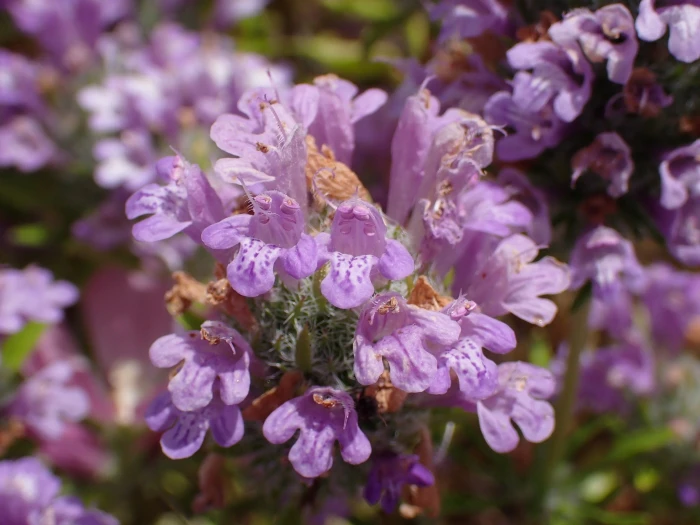Douglas’ Beardstyle
(Pogogyne douglasii)
Douglas’ Beardstyle (Pogogyne douglasii)
/
/

© Cricket Raspet
CC BY 4.0
Image By:
© Cricket Raspet
Recorded By:
Copyright:
CC BY 4.0
Copyright Notice:
Photo by: © Cricket Raspet | License Type: CC BY 4.0 | License URL: http://creativecommons.org/licenses/by/4.0/ | Uploader: chilipossum | Publisher: iNaturalist |

























Estimated Native Range
Climate Requirements for Drexel Heights, Arizona
| This Plant | Your Site | Plant Suitability for Your Location | ||
|---|---|---|---|---|
| • Precipitation | 54" - 65" | 13" | Your precipitation may be insufficient for this plant. Irrigate N" / year. | Irrigate N" / year |
| • High Temp. | 75°F - 96°F | 100°F | Your summer temperatures are normal for this plant. | Excellent |
| • Low Temp. | 33°F - 41°F | 39°F | Your winter temperatures are normal for this plant | Excellent |
This plant should grow well at your location with about N inches per year (Y minutes per month) of irrigation.
Summary
Pogogyne douglasii, commonly known as Douglas’ mesamint and Douglas’ beardstyle, is an aromatic annual herb native to vernal pools and grassland habitats within the California Floristic Province, including the California Coast Ranges, Sierra Nevada foothills, and the Central Valley. It typically grows to about 16 inches tall and is characterized by its sturdy, erect stem and headlike cluster of flowers. The flowers are tubular, 0-1 inch long, and exhibit a striking pinkish-purple color with a white throat that is often spotted with purple and sometimes yellow. Flowering occurs from late spring to early summer, and the blooms are notable for their dense, straight, white hairs lining the long, pointed sepals.
Douglas’ mesamint is valued for its aromatic foliage and attractive flowers, which can add a splash of color to native plant gardens and restoration projects. It is often used in habitat restoration efforts due to its ecological importance in supporting native pollinators. The plant prefers full sun to light shade and requires well-drained soils that mimic its natural vernal pool conditions. It is drought-tolerant once established but may need additional water during prolonged dry spells. While it is not commonly affected by diseases, it can be outcompeted by invasive species or lost due to habitat destruction.CC BY-SA 4.0
Douglas’ mesamint is valued for its aromatic foliage and attractive flowers, which can add a splash of color to native plant gardens and restoration projects. It is often used in habitat restoration efforts due to its ecological importance in supporting native pollinators. The plant prefers full sun to light shade and requires well-drained soils that mimic its natural vernal pool conditions. It is drought-tolerant once established but may need additional water during prolonged dry spells. While it is not commonly affected by diseases, it can be outcompeted by invasive species or lost due to habitat destruction.CC BY-SA 4.0
Plant Description
- Plant Type: Herb
- Height: 0.5-1 feet
- Width: 0.5-1 feet
- Growth Rate: Moderate
- Flower Color: Purple, White, Yellow
- Flowering Season: Spring, Summer
- Leaf Retention:
Growth Requirements
- Sun: Full Sun
- Water: High
- Drainage: Medium, Slow, Standing
Common Uses
Bee Garden, Low Maintenance, Water Garden
Natural Habitat
Native to vernal pools and grassland habitats within the California Floristic Province
Other Names
Common Names: Douglas’ pogogyne
Scientific Names: Pogogyne douglasii, Pogogyne douglasii var. typica
GBIF Accepted Name: Pogogyne douglasii